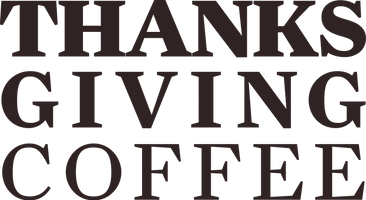Events
View BY :

Earning Beans For Coffee Rewards
Thanksgiving Coffee Company Appreciates You We have made it simple and effective for you to get the appreciation we think you deserve. It is the “Earn Beans” reward system. Yay! These rewards will be counted as “beans” which you can redeem as discounts. The more beans you earn the greater the discount, all the way up to free products!
read more-
![Sixteen Seasons of Coffee and Support]()
The Mendocino Film Festival 2023
The Mendocino Film Festival began on the coast of the Mendocino Headlands sixteen years ago, and they needed coffee. Thanksgiving Coffee saw the opportunity to share art and visions from around the world and bring more culture to our small community. The partnership was a great success and we have been supporting each other ever since.
This year we offered four concession stands at three venues and poured 75 pounds of coffee over four days. We served Paul’s Blend to highlight our winning coffee selection from our Roaster of the Year Award ~ A once in a lifetime honor, along with our Royal Decaf. Thanksgiving Coffee's co-founder, Joan Katzeff has been the mainstay connection for this enduring relationship with the Film Festival all these years.
“We have a lot of appreciation for the volunteers who brewed the coffee very well”
– Co-founder Joan KatzeffSomething New - Affogatos
A unique addition to our drip coffee came from our Sales and Marketing Manager Joe Seta. In partnership with Cucina Verona, the makers of the delicious vanilla ice cream, Thanksgiving brewed our light roast Espresso - called The Upsetter - and poured it, steaming hot, over the ice cream to create 550 Affogatos (An Italian dessert) to the delight of the festival goers, both at the opening Gala and the Italian shorts series.
Joe Seta serving up the Affogatos
Native Cinema Returns
Last year as part of our Bee Bold Alliance, Thanksgiving Coffee sponsored, and produce the first Native Cinema Program for the Mendocino Film Festival. It was met with great success and the Festival board then voted to include it into every festival season.
From left to right: Bernadette Smith, Ras K'Dee and Coastal Pomo Dancers. Image by Holly Sheehan.
This year’s Native program was co-produced with Xa Kako Dile:, A women’s led Indigenous learning garden and working farm. Bernadette Smith (the Board Chair) led the Coastal Pomo Dancers in a beautiful and heartfelt opening along with Ras K'dee who all set the stage for the wonderful feature documentary Groundworks. This film follows four California Indigenous Artists who were reunited for the first time (since the filming in 2017). They gave an insightful and inspired panel discussion about their work and how to learn more about local Native Culture.
From left to right: Kanyon Sayers-Roods, L. Frank, Bernadette Smith, Ras K'Dee.
Insight from our own Shane Powers
"I attended several films at the Mendocino Film Festival with friends, and they were all very entertaining and well done. We enjoyed Patrick and the Whale on Saturday, which featured some really great cinematography and a fascinating story with helped us better understand many of the whale species found along the Mendocino Coast. The panel discussion afterward with local marine and whale experts took that knowledge deeper and added so much meaning to the film.
We also very much enjoyed Little Richard: I Am Everything, and we were convinced that Little Richard indeed WAS the “King of Rock and Roll”, through lots of archival footage, some great music and a vast array of interviews, including many with Little Richard himself. And we were so inspired by Native Cinema: Groundworks, a documentary made by indigenous people about indigenous people, specifically those near and dear to our local hearts. To see the beautiful, well-presented live dance performance before the film was a real treat as well. Overall, we were impressed with the organization, passion and presentation of the festival by everyone from staff to volunteers to vendors/sponsors and everyone involved." Shane Powers - Online Sales Administration at Thanksgiving Coffee.
Reel Mendo with Mischa Hedges
" I always enjoy attending the Mendocino Film Festival, and it's truly a special experience to have the opportunity to screen films I've made in my hometown. This year's program was thought-provoking, entertaining, and joyful - the range of films was fantastic. I look forward to attending again next year - hopefully with another film!" Mischa Hedges Founder & Executive Producer of Trim Tab Media and filmmaker and panelist for Reel Mendo with Oracle: the Life & Music of Michael Hedges
Thanksgiving Coffee donated to four concession stands, at three venues, and poured 75 pounds of coffee over four days.
Yes, It has been sixteen years of coffee and support for the Mendocino Film Festival. It has been full of visual creativity with insights from the wider World onto the big screen in the big tent on the hill. We look forward to many more seasons to come. Thank you for the memories.
Follow our Thanksgiving Life
Sixteen Seasons of Coffee and Support
read more -
![Pollinator Week Partner Post]()
Here is a post from our Bee Bold Alliance partner Conservation Works, with a highlight on our collaborative efforts to restore biodiversity and support local food systems with youth.

Stitching Together Bee Patches of Pollinator Habitat
By Oona Heacock, Executive Director of Conservation Works
![Bee]()
On a foggy morning along the Westport Headlands Park, Conservation Works volunteer Joan Wier sets up tools for a group of Bee Bold Youth Core teens and their parents as they gather to plant a new habitat garden for bees. As the teens arrive at this dramatic seaside park, Joan guides them around the perimeter of the future garden, hanging string around wooden stakes that the group pounds into the mowed grass to form the shape of a whale in honor of the Westport Whale Festival held each year at this site. A Bee Patch is being created.
“The trick is to plant 3 foot blocks of the same kind of flower to attract pollinators and plant four seasons of bloom,” Weir explained. She went on to demonstrate how to hand grub the grassy headlands site to expose soil and then directed one mom and daughter pair to cast native lupin seeds directly onto the soil while others mixed seeds with clay to form little seed bombs which later would be rolled onto the site at the end of the day.
![Bee]()
![Bee]()
Bees are struggling. Multiple factors are causing this decline, but coming together as a community and involving youth to plant a “Bee Patch” of native flowering plants along with clean water and places to rest and nest along our farms, parks and homes can make all the difference in restoring healthy bee populations.
Conservation Works believes that the likelihood of long-term environmental sustainability of our pollinators needs to involve the next generation. Our Bee Patches program energizes youth to choose to be environmental stewards throughout their life, and nurtures them to become the change-makers for taking direct action to reverse the downward spiral in pollinator populations.
Bees inspire a sense of wonder and fascination in most of us and can be a good way to introduce youth and community groups of any age and background to the larger natural world. Bees can be found in any landscape. We will never see most of these furry little wildlife because they’re fast, often small, and nest underground. But take a summer stroll out in your garden or at a local park and you’re likely to spot more bees than you can count. Other beneficial insects and hummingbirds use a garden, too, as it’s a busy oasis of year-round habitat and food resources. Planting a garden is a powerful way to take local action and provide an offset to mounting, worldwide pollinator declines.
![Bee]()
![Bee]()
Everyone can take action with Conservation Works and the Bee Bold Alliance during National Pollinator Week by growing pollinator-friendly flowers, providing nest and rest sites, avoiding pesticides, and spreading the word. And don’t forget to make your commitment official by becoming a Pollinator Protector. Make your pledge.
Pollinator Week Partner Post
read more









